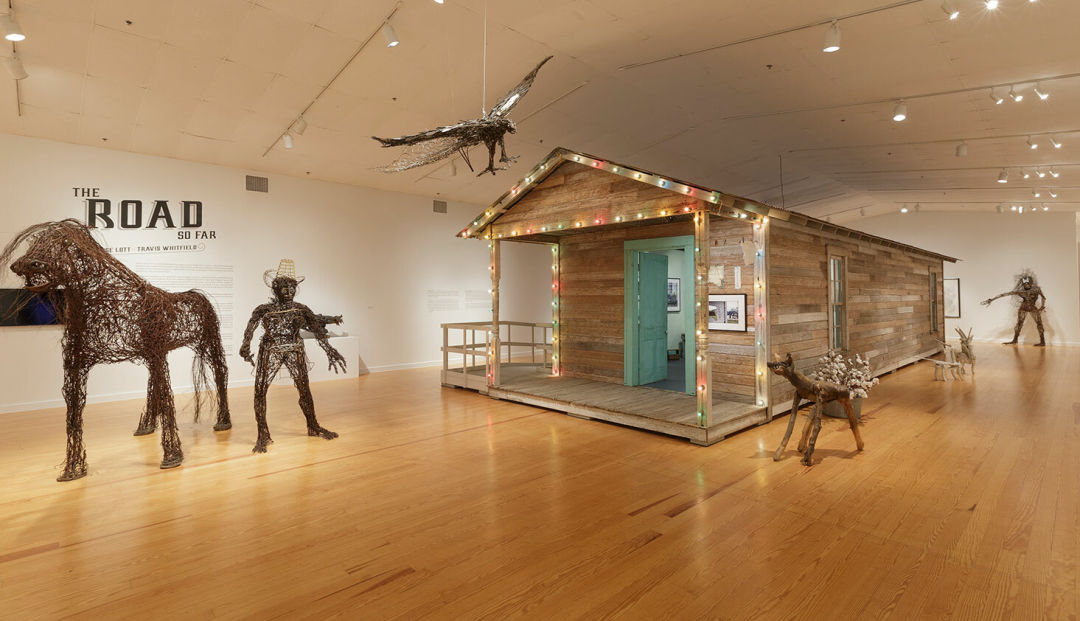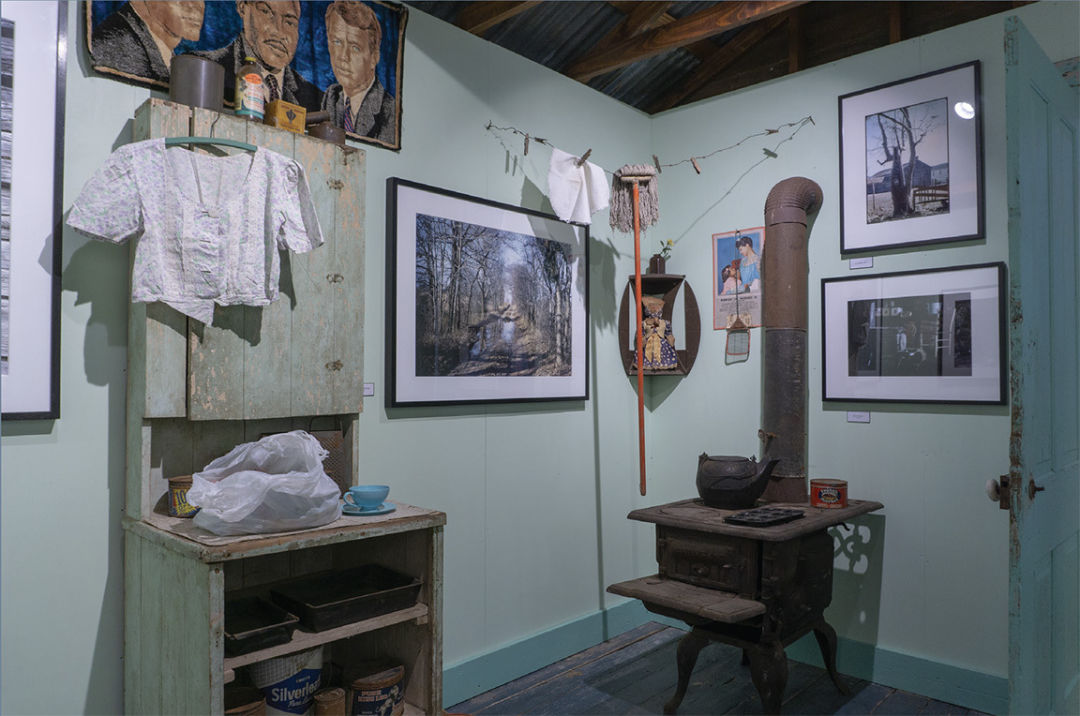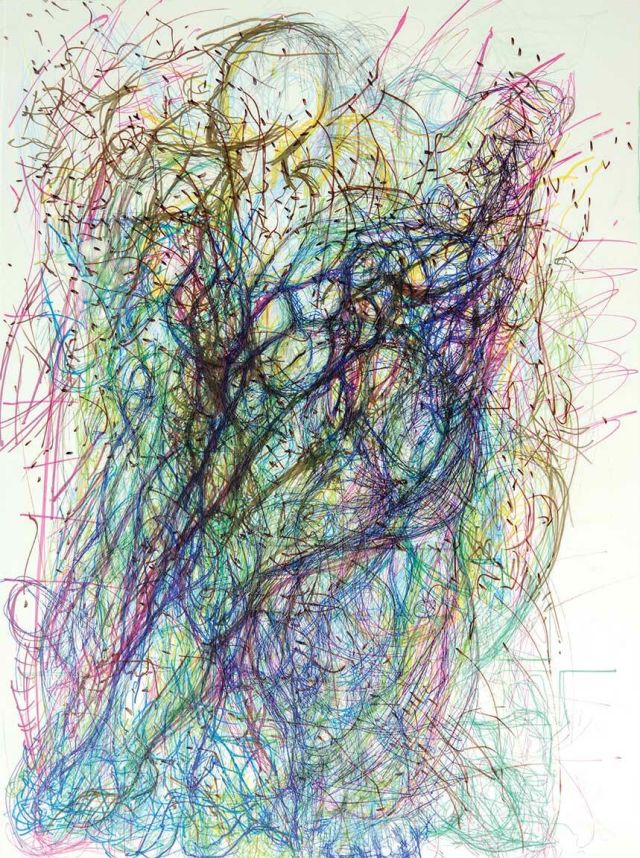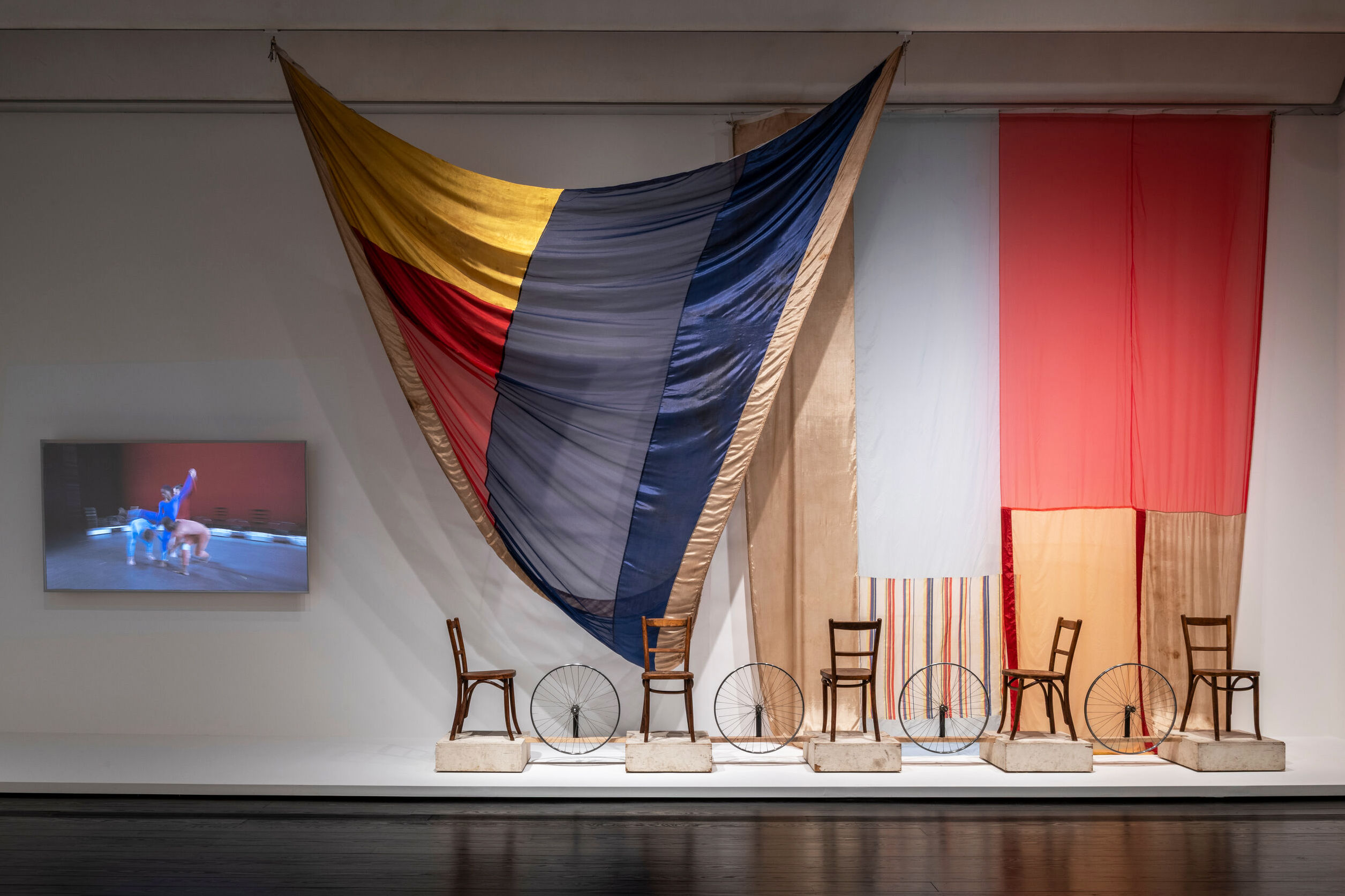REVIEW: The Station Museum’s The Road So Far Revival Thrives in Textural Complexity

As it did with most cultural phenomena, Covid-19 stopped the Station Museum of Contemporary Art dead in its tracks last year. Luckily, when the Midtown museum managed to reopen last fall, curators chose to make up for lost time and continue showcasing its current exhibition, The Road So Far: Jesse Lott & Travis Whitfield, through the summer.
In their distinct yet well-paired recreations, Lott and Whitfield, two artists with strong regional ties, combine for a compelling and politically significant showing.
“It is very important to be able to express yourself as an artist,” artist Jesse Lott told a crowd at Art League Houston in 2016. “Because it is one of the few ways to make an effort to make real changes in the real world without having to resort to any type of violence.”
Indeed, Lott’s sculptures and drawing–though certainly chaotic–are the opposite of violence. “Wire, found objects,” reads several of the material lists on works’ labels. “Hand-carved found redwood.” “Hand-carved found cotton wood.” Lott’s eschewing of conventional materials is a political act, as it removes a barrier to creating art, and in his deployment of discarded objects, the Louisiana-born, Fifth Ward-raised artist is performing a resurrection of sorts, reviving roadside detritus into high caliber artwork.
“We take these objects and we re-contextualize them,” Lott explained in 2019. “In doing so, we add meaning that might not have been intended but is forceful enough to make an impression on the mind of the viewer.”

Shotgun House Kitchen by Travis Whitfield
If Lott’s sculptures in The Road So Far are a figurative revival, Whitfield’s take a more literal approach.
The University of Houston graduate has recreated a shotgun house (called “Shotgun House”), like the ones he saw when he first started documenting the lives of retired sharecroppers in northern Louisiana's DeSoto Parish during the 1970s, and populated it with recovered relics and his own photography: A faded sepia portrait of Dr. Martin Luther King, Jr. hangs on the house’s interior wall; withered wooden cupboards hold rusted cans of cocoa, saltine crackers, and pine oil.
In some instances, Whitfield’s Kodachrome images affirm the accuracy of his artistic representation. Beneath a decrepit shard of mirror and a thermometer hangs a print of the same two objects, titled “Ward’s Shaving Mirror,” taken nearly four decades prior.

A drawing from An Exploratory Process by Jesse Lott.
The Road So Far is an aesthetic success, and visitors will find themselves circling Whitfield’s shotgun house to admire his architectural recreation as much as Lott’s series of rogue-lined ink drawing series, titled “An Exploratory Process,” which is positioned along the gallery’s walls.
But the display also possesses a sociocultural significance typical of past exhibitions at the Station Museum (visitors will also enjoy mural art by Houston artists relating police violence and gentrification on the museum’s exterior). There is a long-running debate about art’s role in society with some saying it has become irrelevant, no longer conveying any importance about who we are.
Yet while there is no doubt that many museum-goers depart exhibitions without feeling that “impression on the mind” Jesse Lott speaks of, it would be foolish to adopt nihilistic speculations on art’s impact. Inside Whitfield’s shotgun house, an entry book lies on an aged dresser beneath a sign encouraging visitors to leave their thoughts.
“I have accepted my blackness,” reads one entry. “It’s a superpower. I won’t go back.”
Thru August 31. Free. Station Museum of Contemporary Art, 1502 Alabama St. 713-529-6900. More info at stationmuseum.com.




